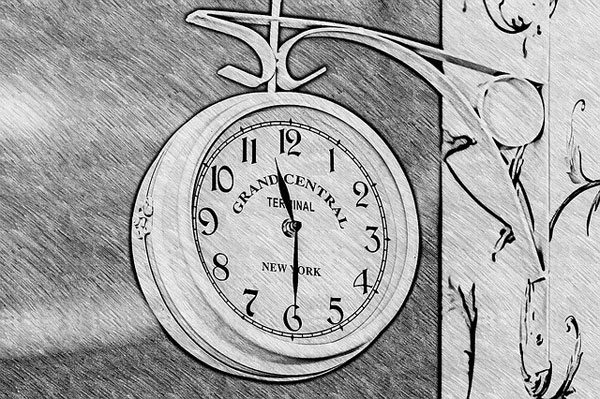
For the uninitiated, donor-advised funds, or “DAFs,” are funds set up with “charitable sponsors” to allow donors to get a charitable deduction at the point of their funding while charitable grants are made from them over time at the donor’s direction. As most NPQ readers know, DAFs have significantly grown from year to year over the past few decades, outpacing growth in giving through other intermediaries. Over time, the numbers and types of institutions that act as charitable sponsors to them have also grown, along with variations on the basic theme. Some institutions provide more guidance on the donor’s giving, others provide almost none, and the amount one must devote to starting an account differs from institution to institution. But the field is undeniably growing steeply; last year, the money taken in by Fidelity Charitable Funds, alone, outpaced the entire United Way Network.
Long before the contents of the 2017 tax overhaul were finalized, and in the context of a booming stock market, most understood that DAFs would likely continue to grow significantly year upon year. What remains uncertain are the effects of a new tax bill passed near the end of last year that would nearly double the amount taxpayers must itemize before they can deduct their charitable contributions.
In the interest of setting a baseline, National Philanthropic Trust reports that donor-advised funds held around $85 billion in 2016. NPQ asked a few DAF charitable sponsors whether they saw a surge in the number of DAFs started and in the money given to existing funds. It’s hard to attribute causality to the situation we found: Was there a spike? Yes. Did the tax bill play a part? Was this likely to be a one-time high with a subsequent valley? That’s harder to say.
We interviewed three different types of DAF charitable sponsors: an independent fund, the network of Federated Jewish Funds, and a number of community foundations. Among them, there was little consensus about the effects of the tax overhaul, but they could agree on some possible trends.
Eileen Heisman of National Philanthropic Trust (NPT) told NPQ that they did see an increase both in volume and dollars at the end of the year, compared to December of the previous year. “In part because of the 457A hedge fund repatriation deadline, we had a very busy October and November, so I would say it started then. But, like most charities, the last days of December are always still the craziest for us.”
Heisman reports around a 20 percent increase in dollar contributions in December between 2016 and 2017, and that they opened 30 percent more accounts this December than last. She also said that 2017 was unique with both 457A and an increase in unusual contributions. “Funding a DAF with illiquid assets is definitely an upward trend; in the last few months, we have accepted artwork, jewelry, and three different types of cryptocurrency.”
Heisman called this year’s events a “perfect storm,” what with the stock market boom, tax reform, and the 457A deadline. Even so, she does not necessarily expect the DAF trend to diminish, either in enthusiasm or growth. “I tend to be conservative in my predictions, but my hope is that as more and more donors realize how easy and flexible their donor-advised fund is, they’ll start looking at all of their assets—from appreciated stock to real estate—as potential, and possibly transformative, gifts to charity.”
According to ThinkAdvisor, Schwab Charitable reports that the hike in giving preceded the tax measure, saying the number of new DAF accounts it opened spiked 91 percent in the second half of 2017 (over the same time period the previous year) due to stock gains and tax concerns. As its statement read,
The new federal tax legislation and strong market performance helped make 2017 a truly historic year for charitable giving. Over 70 percent of contributions into Schwab Charitable accounts were highly appreciated, non-cash assets such as publicly-traded securities, restricted stock and real estate.
Fidelity Charitable, the nation’s largest such fund, reports bringing in twice its goal for numbers of new accounts at 22,000, writes Richard Rubin for the Wall Street Journal in its report dated February 1, 2018, and Vanguard reported doubling its last year’s total accounts.
The Sioux Falls Community Foundation told NPQ it had a very big increase both in giving and in numbers of new funds, while giving out of the funds remained relatively stable. Andy Patterson, the president and CEO, said the foundation currently has around 1000 donor-advised funds and that they generally will see around four to seven new funds established in December each year. This past December, however, there were 31, and in the last week of the year, they were being established at a rate of four to five a day, attributable in large part to the tax overhaul.
But, Patterson also said the new funds appear to be seeded at lower levels than has been the case. Generally, funds started with six figures, but that has changed. The donors were still well off…but less wealthy, perhaps, than in the past. A lot of the new funds were the result of referrals from CPAs.
There was less activity at the Greater Worcester Community Foundation in Massachusetts, which saw a small flurry of DAF starts in the last few days of 2017 but nothing comparable to Sioux Falls. Ann Lisi, the foundation’s president, said there was overall less activity in donor-advised funds in 2017 than in previous years. On the other hand, she finds that people are endowing scholarship funds at ever-higher rates.
Steve Maislin of the Greater Houston Community Foundation (GHCF) cautions that his organization is a bit of an outlier in its preponderance of donor-advised funds. Because the GHCF is newer, he explains, they never really developed a general discretionary fund of any significant size, and the donor-advised funds comprise 85 percent of their assets. He also noted GHCF’s part in the response to Hurricane Harvey and the fact that they also had, as NPT reported, another fairly significant spike in 2016, against which this year is compared. In the end, the total amount they took in for donor-advised funds in 2016 was $161 million, and in 2017, that increased to $170 million. Their DAF payout rate also increased—from 16.5 percent in 2016 to 24 percent last year. (This may, however, be attributable to DAF outlays related to disaster relief.) On top of what they received in donor-advised fund money, the foundation also collected about $112 million from 125,000 donors for immediate distribution in disaster relief. Still, in all of this, not many new funds were started.
The Wall Street Journal reports that the Cleveland Foundation took in $26.5 million just in December of 2017—more than the last three Decembers combined.
There was definitely a spike in new donor-advised funds and in contributions at the Federated Jewish Philanthropies, says Steven Woolf, who is the Senior Tax Policy Counsel – Public Policy/ Government Affairs at the DC office of the Jewish Federations of North America. But, he adds, this happens every time there is economic uncertainty. He reports that the Cleveland chapter alone established 89 new funds this year. Nationally, the network holds about $7 or $8 billion in such funds, with a 20 percent payout rate.
Woolf reports that the funds are becoming ever more key to their work because they provide a way for families to get involved in philanthropy as a group while remaining connected to a community interested in Jewish giving specifically. He says that this year, many donors made gifts of appreciable stock.
Sign up for our free newsletters
Subscribe to NPQ's newsletters to have our top stories delivered directly to your inbox.
By signing up, you agree to our privacy policy and terms of use, and to receive messages from NPQ and our partners.
Like others we interviewed, Woolf said he has noted a shift to include more lower-level funds, and he sees a “market” opening up for more middle-income people, who may see the benefits of bunching donations they plan to make over several years into one year to get a tax benefit.
What We May Be Looking At
The dramatic growth of DAFs in recent years has been well documented already (e.g., Rooney, 2017). It’s also clear that giving is positively associated with both growth in income and growth in wealth, especially the stock market, which is a more liquid source of wealth than most (e.g., Deb, et al, 2003; Wilhelm, et al., 2008; and Giving USA, 2017). Therefore, the dramatic stock market growth since the Great Recession, and the so-called “Trump Bump” in the stock market (ranging from 20 percent to 25 percent last year, depending on which stock index one prefers) has provided additional fuel to the DAF fire. So, it is on top of these factors that the new tax bill creates direct and indirect incentives to create new DAFs or add to extant ones.
The direct effect is from the after-tax increase in income that provides an estimated $1,600 (Tax Policy Center, 12/18/2017) per household on average. That said, the after-tax effects are much greater for households earning $200,000 or more (Joint Committee on Taxation, 12/18/2017). According to the Tax Policy Center (12/22/2017), “the largest cuts as a share of income going to taxpayers in the 95th to 99th percentiles of the income distribution.” The indirect effects of the tax bill are from the near doubling of the standard deduction, which will mean that the vast majority of households, who were tax itemizers in the past, will now become non-itemizers (Tax Policy Center, 11/1/2017).
If you look at gift giving apart from the rest of the tax equation, becoming a non-itemizer significantly raises the price of making a gift. Let’s say that prior to the new tax bill, a couple earned $200,000 adjusted gross income (AGI) per year, donated $10,000 per year and faced a 33 percent marginal tax rate in 2017. Given that this household could deduct their donations, it cost them $6,700 to donate the $10,000 (1–MTR, or 1–0.33=0.67). If the same household earns the same amount in 2018 and donates the same amount, but they became non-itemizers, it would cost them 49 percent more to give the exact same amount ((10,000–6,700) ÷ 6,700)) × 100 = 49.25).
Despite this additional cost, the household might choose to make the exact same donation for any number of reasons; for one thing, their charitable donations may have purposes entirely unrelated to tax status. Few donors, after all, have said they give because of the charitable deduction (Lilly Family School of Philanthropy, October 2016), though some do say their timing may shift based on taxation.
We know from our Philanthropy Panel Study, which is a module embedded in the University of Michigan’s Panel Study of Income Dynamics (PSID), the largest and longest running panel study in the world, that itemizing households are more than twice as likely (82 percent) to make a gift at all than non-itemizing households (40 percent) and they make significantly larger gifts—even after controlling for differences in income and wealth (Rooney, et al., 2016). People don’t give because of the tax deduction, but it may affect where, when, and how much households donate. For example, some are now suggesting that households that are “on the bubble” between itemizing or taking the standard deduction annually may now elect to “bunch” their giving for several years into one year, itemizing that year and taking the standard deduction in other years.
There are a few things worth noting about this strategy. First, while this idea may appeal to lots of people, not everyone can afford to front-load or bunch their giving. It will take years before we can know definitively how the tax bill affected giving—both by individuals during their lifetimes and at death, as well as by corporations. Foundations might be affected indirectly by the tax bill to the extent it stimulates wealth in the real economy and in the stock market, which would improve the portfolio balances of existing foundations and create new wealth that might lead to the formation of new ones.
Even after multiple years of new data, estimating the effects of the tax bill on philanthropy will be complicated by trying to parse out how many of the changes were in response to the tax bill and which ones were overall macroeconomic changes that would have transpired regardless. Further potential complications include individual and intra-family influences like promotions, raises, layoffs, marriages, divorces, having children and sending them to college, and so on. All these factors (and many others) affect giving by individuals and households, and for many of them, there will be an ongoing interplay of personal circumstances, the tax bill, and what would have happened nationally and globally otherwise.
In 2018, there will be an additional chaotic element: Many households are on the bubble between being itemizers and not, and they may not even know their itemization status for sure until they do their taxes in the spring of 2019. As they figure out what it takes to itemize on an alternate-year basis, or perhaps even less often, many will decide that a DAF is the perfect venue to achieve their multi-year philanthropic goals and still get a legal tax deduction for those charitable gifts.
Given the short timeframe between the passage of the tax bill and the end of the tax year (calendar year for households), nobody should be surprised that many high-income households scrambled to create new DAF accounts or to enhance the holdings in existing ones. Doing so guaranteed their tax deductibility and did so at a higher marginal tax rate than will be the case for the next several years. Therefore, we can see there was an artificial spike in household giving of all types, but especially into DAFs, at the end of 2017.
It’s too early to tell whether this will cause a drop in giving from 2017 to 2018 like the one we saw between 1986 and 1987 as a result of that year’s Tax Reform Act, but it’s clearly something for which we should be on the lookout. In addition, given the loss of tax deductibility for all but the highest-income households, we anticipate that many more households will “pre-give” or “post-give” larger dollar amounts in one year and then little or nothing in the other years. DAFs are the perfect giving instrument for doing this, so love them or hate them, we should expect to see DAFs play an even larger role in the future philanthropic landscape.
One simple solution that would address many of society’s biggest challenges while enhancing philanthropy at the same time is to enact a universal charitable deduction. Allowing all taxpayers to deduct the value of their donations, as was the case from 1982 through 1986, would democratize philanthropy. Legislation to this end was introduced in both the House and the Senate during the discussions about the tax bill in 2017, but there was never any groundswell of support for this concept by the White House or Congress. While this would cause some lost revenue to the federal treasury, it’s a proverbial drop in the bucket, particularly in an era of $1.5 trillion for some temporary tax cuts. Moreover, our research at the Lilly Family School of Philanthropy suggests that the tax revenues lost would be nearly entirely offset by increases in charitable deductions, so society would have similar funding levels to support these social needs.
Our prior research, commissioned by Independent Sector, found that based on the Camp proposal, which is similar in most ways to the final tax bill, at least some households will reduce their giving in response to the tax bill, totaling an estimated $13 billion or more (Lilly Family School of Philanthropy, May 2017). It is important to acknowledge that we did not do any “dynamic scoring” or include any “growth dividends” in our analyses. However, we did find that even with the reduction in the top marginal tax rate and a near doubling of the standard deduction, by adding a universal deduction for charitable contribution, giving by living households would increase by an estimated 1.7 percent. That’s a dramatic difference between a drop of 4.6 percent with the tax cut and the doubling of the standard deduction!
Conclusion
Our interviews reveal a complex picture with a number of active trends—the state of the stock market, the preexisting steep upward trajectory of donor-advised funds as a preferred vehicle, the interest of those at lower income levels to make use of them, and the tax overhaul, among others. So, in the end, considering the many dynamics at work, we’ll have to wait to see exactly what the effects of the tax cut will be, both immediately and over the longer term. We will also need to wait to see what kinds of organizations will experience the brunt of any reductions in giving.
In the meantime, nonprofits should understand that increasing amounts of money are hosted by the donor-advised funds, which, in the end, are a vehicle for individual giving—much of which is not in any way anonymous. Thus, if you want a bigger portion of that rapidly growing pot, there are no shortcuts: You must treat the donor as you always have, or as you should have treated them in the first place. The check will just look different!
References
- Deb, Partha; Mark Wilhelm, Melissa Brown, and Patrick Rooney (2003). “Estimating Charitable Deductions in Giving USA.” Nonprofit and Voluntary Sector Quarterly, vol. 33, #4, pp. 548-567.
- Giving USA 2017: The Annual Report on Philanthropy for the Year 2016 (Chicago, Giving USA Foundation, 2017).
- Joint Committee on Taxation (12/18/2017). “Distributional Effects of the Conference Agreement for the H.R. 1, The ‘Tax Cuts and Jobs Act.’” Washington, DC.
- Lilly Family School of Philanthropy (October 2016). “The 2016 US Trust Study of High Net Worth Philanthropy.”
- Lilly Family School of Philanthropy (May 2017). “Tax Policy and Charitable Giving Results.” Commissioned by Independent Sector.
- Rooney, Patrick M. (2017). “Have Donor-Advised Funds and Other Philanthropic Innovations Changed the Flow of Giving in the United States?” Nonprofit Quarterly, Vol. 24, Issue 3, pp. 22-31.
- Rooney, Patrick; David King, Xiaoyun Wang, and Thad Austin (2016). “A Longitudinal Study of Giving to Houses of Worship: 2003–2013.” Presented at ARNOVA, November 18, 2016.
- Tax Policy Center (12/22/2017). “Analysis of the Tax Cuts and Jobs Act.”
- Tax Policy Center (11/1/2017). “Why Tax Reform Flounders: The Case of Doubling the Standard Deduction.”
- Wilhelm, Mark; Rich Steinberg, Eleanor Brown, and Patrick Rooney (2008). “The Intergenerational Transmission of Generosity.” Journal of Public Economics, 92#10-11, pp. 2145-2156.
CORRECTION: The statements formerly attributed to Steve Gross of the Jewish Federations of North America were actually made by Steven Woolf of the same organization. NPQ apologizes for any confusion.











